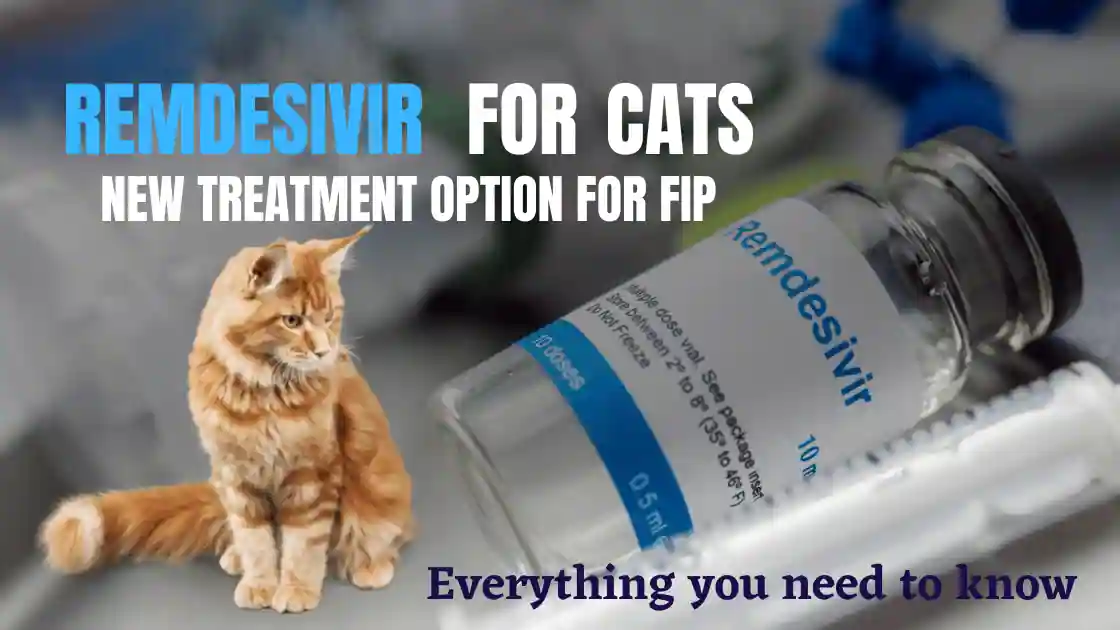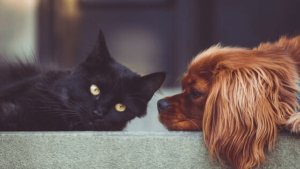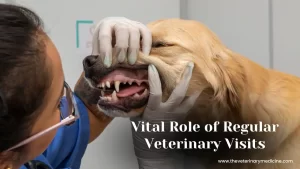Feline Infectious Peritonitis
Feline Infectious Peritonitis (FIP) is a devastating disease caused by RNA virus that affects both domestic and wild cats worldwide. But it is more common in multi-cat environments like shelters and catteries. FIP can affect multiple organs like liver, kidneys, and lungs, and can lead to a range of symptoms such as lethargy, fever, weight loss, ascites, pleural effusions, ocular discharge, and neurological dysfunction. Unfortunately, FIP is often fatal, and supportive care is the only treatment option available as there is no fixed cure for the disease.
However, recent studies have shown promising results with the use of Remdesivir and GS-441424. Remdesivir is an antiviral drug that was originally developed to treat human viral infections and was extensively used during pandemic.
In a study conducted by the University of California, Davis, Remdesivir was found to improve survival rates in cats with FIP. The study involved 31 cats with confirmed FIP, of which 26 received Remdesivir treatment. The study found that cats treated with Remdesivir had a higher survival rate and longer survival time than cats that did not receive the drug. Another study conducted by Kansas State University found similar results, with Remdesivir treatment leading to a reduction in clinical signs and an increase in survival time in cats with FIP.
Understanding the Remdesivir
Remdesivir is an antiviral drug that was first developed by Gilead Sciences in 2009 to treat hepatitis C virus (HCV) infections in human. It is also known as GS-5734; a prodrug that is broken down to GS441524 when administered, which is the ultimate active ingredient that stops the replication of FIPV (Feline Infectious Peritonitis Virus). Difference between Remdesivir and GS-441524 is that Remdesivir has extra phosphate group. This modification helps in entrance into cell and incorporation into viral RNA.
Remdesivir is currently conditionally licenced for human use only (hepatitis C, Ebola, novel corona virus / COVID-19) and can be used in cats off-label for the treatment of FIP. But GS-441524 has not been licenced for animal use (neither for human). Feline infectious peritonitis caused by mutated FCoV, to be incurable and almost 100 percent fatal if left untreated as currently no legal treatment is available. In most of the cases, cats with FIP either die or have to euthanize. Previously Omega interferon and polyprenyl immunostimulant (PPI) have been used with reasonable efficacy in some feline patients.
Mechanism of Action:
Remdesivir or GS-441524 works by blocking FIP viral RNA replications. Active form of the drug works as a nucleoside analogue, meaning it mimic the nucleoside building blocks—A, U, C, or G—that make up the virus’s genetic code. Specifically, it mimics “A”. When the virus is tricked into incorporating a GS-441524 molecule (active form of remdesivir) instead of “A”, the replication process breaks down. It leads to premature termination of viral RNA synthesis and inhibition of viral replication.
Metabolism:
Remdesivir has molecular weight 603 gram per mole while GS-441524 has a molecular weight of 291 gram per mole. This is why it has higher dose requirements (almost twice). Remdesivir is given through subcutaneous route only because it has no acceptable oral bioavailability. But GS-441524 is also supposed to have less oral bioavailability in comparison to subcutaneous or intravenous administration of Remdesivir that why dosage for both are same i.e. for oral GS-441524 and s/c or i/v Remdesivir.
Remdesivir is metabolised in the liver and this may possibly lead to an increase metabolic rate and increased liver enzyme activity. GS-441524 has advantage over Remdesivir due to its reduced liver toxicity and good oral bioavailability. Renal toxicity has not been reported during previous studies and symmetric dimethyl arginine values were found within the reference range.
Preparation of Remdesivir for Treatment:
Remdesivir is provided in a 100 mg vial which is reconstituted with 9 mL of sterile water for injection to give a 10 mg/mL solution (10 mL per vial after reconstitution).
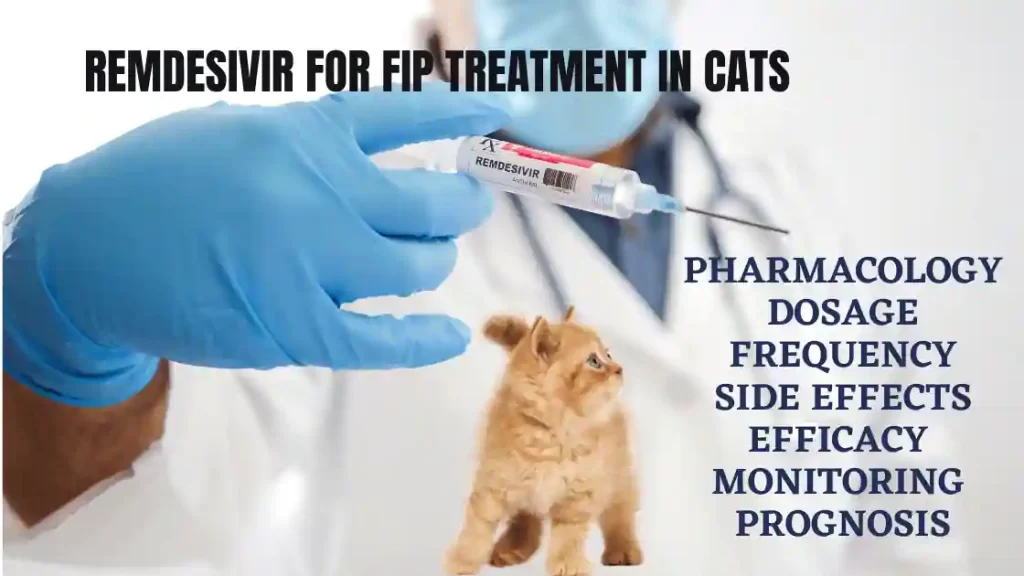
Dosage for Various Forms of FIP:
A loading dose @ 10-15 mg/kg body weight intravenously (slow administration over the period of 20 to 30 minutes or longer) once a day for the first 3 days has helped in achieving antiviral efficacy rapidly. Follow up cases can be maintained @ 5-6 mg/kg bodyweight subcutaneously for two weeks.
Wet FIP (no ocular or neurological signs): 10 mg/kg body weight intravenous or subcutaneous once in a day for 2 weeks
Dry FIP (no ocular or neurological signs): 12 mg/kg body weight intravenous or subcutaneous once in a day for 2 weeks
Ocular Signs (Dry or Wet): 15 mg/kg body weight intravenous or subcutaneous once in a day for 2 weeks
Neurological signs (Dry or Wet): 12 mg/kg body weight intravenous or subcutaneous once in a day for 2 weeks
Follow Up:
In case ocular involvement @8mg/kg Bodyweight once in a day and in case of neurological FIP with nervous signs @ 10 mg/kg body weight once in a day subcutaneously up to period of 12 weeks or 84 days.
Some authors has advocated even up to 20 mg/kg body weight once a day subcutaneously for 2-4 weeks in case of neurological FIP.
Though oral administration of GS-441524 is a much safer and economic alternative for follow up after 2-4 weeks of intravenous or subcutaneous therapy.
Dosage for follow up for GS-441524 are (orally in form of capsules or tablets):
Dry/wet FIP: 10-12 mg/kg body weight once a day;
FIP with ocular signs: 15 mg/kg body weight once a day;
FIP with neurological signs: 20 mg/kg body weight once a day or 10 mg/kg body weight twice a day.
Note:
Cats with less severe disease:
Start with Remdesivir S/C for 1-2 weeks and then switch to oral GS-441524 till day 84
Cats with more severe disease:
Start with Remdesivir I/V for first 3-4 days (loading dose), followed by S/C injection for 1-2 weeks and then switch to oral GS-442524 till day 84
* If weight increases then increase the dose to meet the required dosage for appropriate FIP form.
* Start with higher dosage initially because relapse of the FIP before 84 days will cost more than initial cost of higher dosage.
* Preparations of GS-441524 procured from black market may not contain the mentioned concentration and may require initial higher dosage in comparison to mentioned in some research publications.
Dealing with discomfort:
Subcutaneous injection of remdesivir causes pain/ discomfort. It can be minimized by doing following:
- Advise owners to use a new needle of suitable gauge (23 or 24) each time.
- Allow filled syringe to keep on room temperature.
- Rotate the injection sides (lateral sides of thorax and hip).
- Oral gabapentin or buprenorphine 30-60 min before injection will help in inducing mild sedation /analgesia.
- Topical EMLA cream (Lidocaine and prilocaine) / or anaesthetic spray application may help upto a certain extent.
- Keep the cat engaged during the time of administration with treats, stroking, brushing or playing.
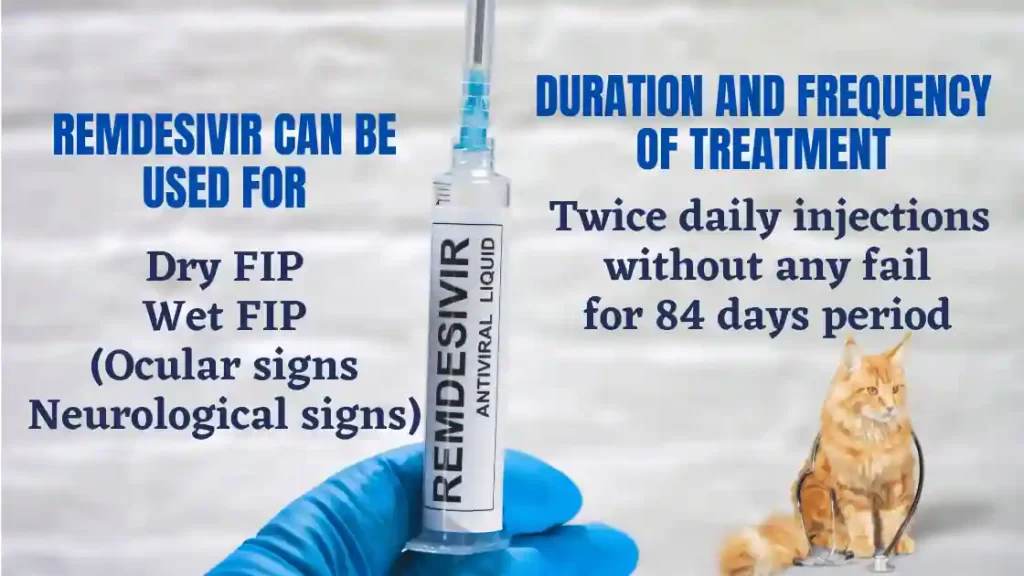
Recommend frequency:
Give the calculated dosage at 24 hours interval. For sever FIP cases, perform injections at 12 Hours apart instead of 24 Hours until the cat is out of the danger zone. E.g. complete paralysis, seizure, inability to eat at all (dependant on drips).
Subcutaneous injections for a period of 12 weeks or longer are not easy to perform for owners and also painful due to the low pH of preparations.
In cats that find the SC injections painful (less painful at room temperature), gabapentin and/or buprenorphine 30-60 min prior to inoculation can be used carefully for sedation/analgesia.
Sometimes doses lower than recommended may result in to disease recurrence at the end of treatment and development of viral resistance for drug.
Do not discontinue the treatment till 84 days or 12 weeks even if symptoms resolve and keep monitoring. In case of relapse revaluate and increase the dosage.
Side Effects of Remdesivir in Cats:
Remdesivir has overall safety profile and well tolerated by cats but still a few potential adverse effects can be seen. Injection site inflammatory reactions (pain, skin ulceration or superficial skin lesions) can be noticed in cats but these are less than GS-441524. To reduce local discomfort, leave the remdesivir at room temperature before administration. In a very few cases worsening of plural season in first 48 hours can be seen.
Some cats may appear somewhat depressed for a few hours after intravenous administration of remdesivir. Side effects like nausea, vomiting, renal dysfunction, sweating or shivering have not been observed in feline patients. But it may result into increased serum aminotransferase (ALT).
Contraindications / Warning:
Use of fluoroquinolones (enrofloxacin) is claimed to be toxic for central nervous system (CNS) based on some recent studies and it may affect the cats with neurological symptoms (FIP).
Use of immune boosters (dimethyl glycine or DMG) may be harmful and it may cause viral activity to increase.
Flea spot on may affect the subcutaneous absorption of active drug GS-441524.
Do not use prednisolone or corticosteroids for except short term management of pleural effusions.
Safety:
Remdesivir is well tolerated and safe for cats except local discomfort and pain. Neutering of cat can be done once thy are doing well with the treatment if necessary.
Supportive therapy with antiemetics, antibiotics (doxycycline, oxytetracycline, amoxycillin clavulanate, metronidazole, clindamycin), analgesics, intravenous fluids, vitamin-B12, omega fatty acids, appetite stimulants, liver supplements, immunosuppressive (cyclosporin A, anti-TNF-alpha antibodies) and analgesics/ sedatives (gabapentin, lidocaine) can be continued along with remdesivir.
Deworming and flea treatment with powder or collars can be done as per needs but avoid using topical spot-on solutions as they may interfere with remdesivir absorption.
There is no clear information available on the vaccination, but it will cause immune stress so prefer after completion of the therapy.
Monitoring:
Regular veterinary check-ups and monitoring of the cat’s clinical signs are also important to ensure that any changes in the cat’s condition are addressed promptly. In addition, it is important to provide supportive care, including nutrition and hydration, to cats undergoing treatment with Remdesivir.
Clinical signs like effusions, neurological signs, discharges, activity, behaviour and body weight should be monitored. Blood parameters should be evaluated at every two weeks (CBC, Kidney Function Tests, Liver Function Tests – ALT, albumin-globulin ratio). Presence of clinical signs like effusions even after two weeks or if clinical signs worsen or increase then increase the dosage.
Lymphocytopenia and anaemia will take more time to resolve (up to 10 weeks) and lymph node size reduces over a few weeks with progression in cure but symptoms should not worse.
Ultrasound may be needed to monitor the effusions.
Monitor till 12 weeks after the completion of therapy.
* ALT rise in cats may be due to stress also and it may increase sometimes. Liver tonics can be added to the therapy.
Prognosis:
Cats treated with remdesivir has shown a good prognosis and more than 80% recovery rate. In severe cases intravenous administration of loading dose for first 2-3 days have shown promising response and recovery.
In severe cases not responding to the therapy, euthanasia may be the only option to prevent further suffering.
Availability:
Currently, Australia and the United Kingdom are the only countries where remdesivir is readily available via prescription for veterinary use. However, veterinarians in India, South Africa, New Zealand, and some parts of Europe, have also started accessing the drug using human suppliers.
Cost of Treatment:
The treatment recommended is for 12 weeks duration. Cost may be much higher due to black marketing of Remdesivir and illegal sales of unapproved molecule GS4412524 in black market. Advantage of using remdesivir is that it is an approved drug for human use.
To reduce the cost of the treatment in relapse cases or relapse even after keeping at dose rate of 20 mg/kg use mefloquine along with remdesivir.
Storage:
Store in refrigerator. Must be used within 5 days after reconstitution.
Conclusion:
According to the available literature and initial clinical trials remdesivir has been shown to be effective in reducing the severity of clinical signs and improving the overall survival rate in cats with FIP. While further research and clinical trials are needed to fully understand the efficacy, safety, optimal duration for the treatment and long-term effects of the drug on cats. Remdesivir for the treatment of FIP has potential as a new promising treatment option.
References:
Tasker S. Diagnosis of feline infectious peritonitis. ‘Update on evidence supportive available tests’ Journal of Feline Medicine and Surgery (2018) 20, 228–243
Pedersen N.C., Perron M., Bannasch M., Montgomery E., Murakami E., Liepnieks M., Liu H. Efficacy and safety of the nucleoside analog GS-441524 for treatment of cats with naturally occurring feline infectious peritonitis. J. Feline Med. Surg. 2019;21:271–281.
Murphy, B.G.; Perron, M.; Murakami, E.; Bauer, K.; Park, Y.; Eckstrand, C.; Liepnieks, M.; Pedersen, N.C. The nucleoside analog GS-441524 strongly inhibits feline infectious peritonitis (FIP) virus in tissue culture and experimental cat infection studies. Vet. Microbiol. 2018, 219, 226–233.
Dickinson PJ, Bannasch M, Thomasy SM, et al. Antiviral treatment using the adenosine nucleoside analogue GS-441524 in cats with clinically diagnosed neurological feline infectious peritonitis. Journal of Veterinary Internal Medicine. 2020, 34, 1587-1593.
Comparison of treating feline infectious peritonitis using Remdesivir vs BasmiFIP (GS-441524). Caden, J. Updated October 17, 2022
Disclaimer:
Utmost care has been taken during review of literature and writing this post. This information is for veterinary professionals only and no part of this post should be used for self-medication of pets.
This post is dedicated to Professor Niels C. Pedersen who devoted his valuable years (almost 50) to FIP research. We wish and hope that GS-441524 will one day be available legally for cats.


